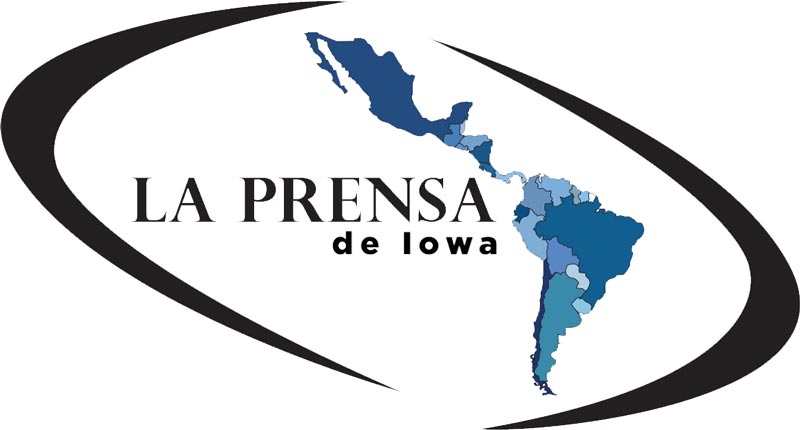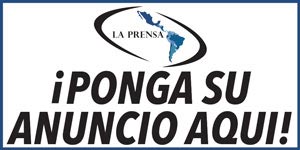La Rosca de Reyes
/⇣ English translation provided at the end ⇣
Una bonita tradición con una historia interesante
La tradicional rosca de Reyes es celebrada por muchos países latinoamericanos -específicamente por las personas que profesan la religión católica. El muñequito simboliza al Niño Dios, y la persona que lo obtiene al morder la rosca es la encargada de celebrar el Día de la Candelaria. La Rosca de Reyes
Redacción
LA PRENSA IOWA
Al igual que muchas tradiciones latinoamericanas, la Rosca de Reyes es originaria de Europa y de la religión católica. Este rico postre, causa de convivios y festejos cada 6 de enero, está hecho de varios ingredientes que tienen simbolismo que se retroceden a cientos de años atrás.
La Rosca de Reyes tiene una forma ovalada o circular. Simboliza la Epifanía, cuando los Reyes Magos se encontraron con el niño Dios. Su forma redonda, representa el amor infinito de Dios al mundo, sin principio ni fin.
La Rosca también puede llevar frutas de diferentes colores que simbolizan las coronas de los Reyes Magos. Estos colores evocan el amor, la paz y la esperanza.
El famoso postre representa la travesía que los tres Reyes Magos tuvieron al seguir una estrella, desde Persia hasta Belén, la que les iluminó el camino para encontrar al Niño Dios.
La tradición mexicana, celebra el 6 de enero la Rosca de Reyes y a los tres Reyes Magos. Este día, según la tradición, los padres de familia les dan regalitos a sus hijos en la madrugada, y les dicen que fueron los tres Reyes Magos quienes se los llevaron. Este acto es representativo de cuando los Reyes Magos llevaron las tres ofrendas al Niño Jesús: oro, incienso y mirra.
Durante la Edad Media en Francia, se acostumbraba “elegir un rey de fiestas” y lo hacían al esconder un haba en la rosca. En la religión católica, el haba representa el escape de José y María al intentar esconder y proteger al Niño Dios del rey Herodes. En la Rosca de Reyes, los dulces coloridos representan las distracciones que harían difícil encontrar a Jesús.
En la actualidad, el haba ha sido reemplazado por el muñequito de plástico que se esconde en el pan. Al partir la Rosca de Reyes cada persona corta un pedazo con un cuchillo, que simboliza el peligro en el que se encontraba el niño Jesús. La persona quien corte el pedazo de rosca con el muñequito adentro es la o el encargado de cocinar los tamales y atole para celebrar el Día de la Candelaria que se realiza el 2 de febrero del mismo año. (Para los católicos el Día de la Candelaria simboliza la presentación del Niño Jesús en el Templo de Jerusalén y la purificación de la Virgen María después del parto para cumplir la prescripción de la ley del Antiguo Testamento).
Durante la celebración del Día de la Candelaria, el(los) patrocinador(es) compran un ropón para vestir el niño Jesús de gala, también regalan atole y tamales. La cantidad de patrocinadores depende del tamaño de la rosca. Mientras más grande sea la rosca, más muñequitos tiene escondidos y como resultado, más padrinos quienes serán encargados del festejo del Día de la Candelaria. Hay veces que por cuestiones de dinero o el simple hecho de evitar la responsabilidad de ser padrino, las personas se tragan al muñequito dejando a todos confundidos y buscando al muñeco.
En otros países latinoamericanos la celebración es más sencilla, comparten la Rosca de Reyes con familiares y amigos, y a la persona que le salga el muñequito, es la que está comprometida a comprar la rosca el siguiente año.
Translation
The Three Kings Bread
A Latin American tradition with an interesting story
Redaction
LA PRENSA IOWA
Like many other Latin American traditions, the Three Kings Bread originated from Europe and the Catholic religion. This delicious dessert, a cause of many celebrations during January 6 th , is made of many ingredients which have symbolic meanings that date back hundreds of years.
The Three Kings bread is oval or circular in shape, and this symbolizes the infinite love of God, it has neither a beginning or end. The Three Kings Bread is a symbol of the Epiphany, when the Wise Men met baby Jesus. You will also find colorful fruits in the Three Kings Bread, each representing the Wise Men’s crowns. These colors evoke love, peace, and hope.
This famous dessert tells the story of the three Wise Men who followed a star that illuminated their journey to Bethlehem to meet baby Jesus. It’s a story about the sacrifice and devotion that these men made in order to finally be able to worship God. This tradition dates back to the Middle Ages.
The story of the Wise Men tells the story of the three men who began their journey, to worship God, from Persia to Bethlehem. And, in Mexico, it’s these three men who bring gifts to the children. This is why on every early morning of January 6 th ; while the children sleep, parents go out to buy and wrap presents so they’re ready for the kids when they wake up. Parents tell their children the presents are from the Wise Men. This act is representative of when the Wise Men brought offerings, gold, incense and myrrh, to baby Jesus.
During the Middle Ages in France, it was customary to "choose a king of the party" and they did so by hiding a bean in the bread. In the Catholic religion, this bean represented Joseph and Mary’s escape as they tried to hide and protect the baby Jesus from King Herod. The colorful candies represent the distractions that would make it difficult to find Jesus.
However, this bean has been replaced with a tiny plastic doll that is hidden in the bread. This is interesting because it is a symbol of how difficult it was for the Wise Men to find the baby Jesus because the star that illuminated their path disappeared.
When it’s time to cut the Three Kings Bread, each person cuts their piece with a knife, which symbolizes the danger that baby Jesus was in.
Another part of this tradition to celebrate with friends and family and to cut the Three Kings Bread. Whoever gets the doll in their piece of bread, will be in charge of Candlemas Day celebration, which is celebrated on February 2 nd . (Candlemas Day, for the Catholics, represents baby Jesus’s presentation in the Temple of Jerusalem and Virgen Mari’s post-partum purification ceremony to fulfill the prescription of the Old Testament law).
During the celebration of Candlemas Day, the sponsor(s) buy a robe to dress baby Jesus and they give out atole (a warm and sweet cornstarch-based beverage) and tamales, made by them, to guests. The number of sponsors depends on the size of the bread. The bigger the bread, the more hidden dolls there will be. There are times when people who get the doll in their slice of bread, swallow it to avoid spending money, or the responsibility they must take-on to be the sponsor of this celebration. This leaves many confused as to where the doll went.
In other Latin American countries this celebration is simpler. The Three Kings Bread is shared with friends and family and the person who gets the doll in their slice, is in charge of buying the Three Kings Bread for the upcoming year.







































